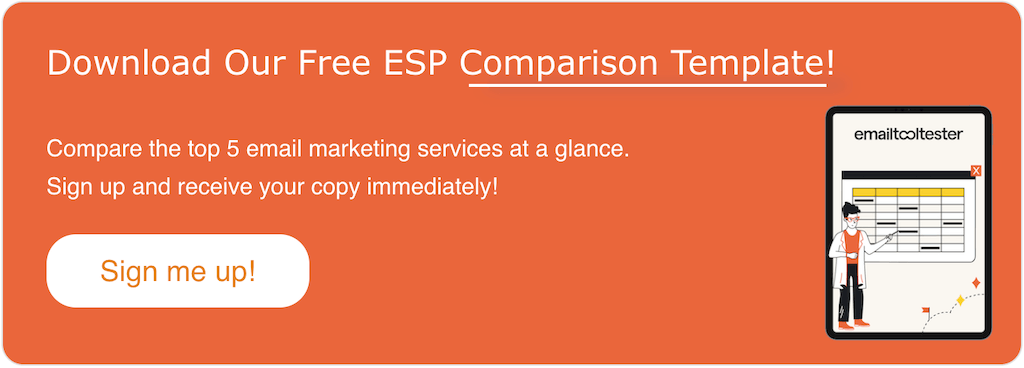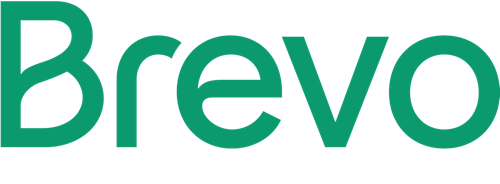EmailTooltester is supported by readers like yourself. We may earn a commission when you purchase through our links. Of course, this won't increase the cost for you.
In this article, we're going to compare Mailchimp and Brevo (formerly Sendinblue), two very popular email marketing solutions for small businesses.
Atlanta-based Mailchimp is a pretty big name, serving more than 20M customers worldwide. However, after spending some time comparing email marketing tools, I can’t help but wonder if the attraction is more tied up in the marketing than the actual product. Perhaps notoriety isn’t everything?
Since Mailchimp started charging users per contact, as opposed to just subscribed contacts (which was previously the case), I wanted to see how it fared next to an email marketing solution that didn’t set a cap on contacts: Brevo.
This Parisian company is growing rapidly around the world, currently providing their services to 300,000 users in 180 countries. In fact, they have a lot to offer users looking for an alternative to Mailchimp.
So let’s take a look at the main differences between Brevo and Mailchimp!
Brevo (Sendinblue) vs Mailchimp in a Nutshell
Mailchimp offers an easy-to-use email editor that comes with a free plan, however, Brevo has more to offer in the way of automations and list management. Price is also a big difference, with Brevo coming out as a much more affordable email marketing provider.
If you’re weighing up Brevo vs Mailchimp, I’m guessing it’s because of one or more of the following:
- You’re a paying Mailchimp user who’s fed up with the big bills that roll in every month
- You’re new to email marketing and are conducting some thorough research on the many alternatives to Mailchimp
- Brevo has grabbed your attention with its very affordable, very complete solution that charges per email rather than per contact… but you still don’t know whether to trust it against such a big name
In this Brevo vs Mailchimp comparison, I’m going to cover everything from templates to pricing, so you’re sure to go away with a clear idea of which tool is best for your email marketing strategy. So let’s dive in!
Ease of Use and Email Editor
Many people are drawn to Mailchimp because of its seemingly user-friendly email marketing software. However, because some functions are sometimes hard to find (for instance, how to add an opt-in form for new sign-ups or create a landing page), I feel it could still be slightly more intuitive for complete beginners.
That said, it does have a well-designed backend that is easy to navigate, and they do a good job of making sure you’ve completed all the necessary steps when setting up a new email campaign.
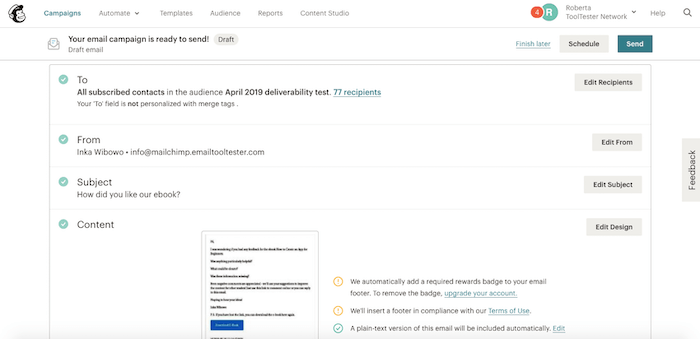
Mailchimp email campaign set-up
Brevo have also done a pretty good job in this regard. Their drag and drop editor is fast and offers all the pre-set options you’ll need. They also guide you through each step so you don’t forget anything.
They also offer the option to revert to previous versions of the email, which is super useful.
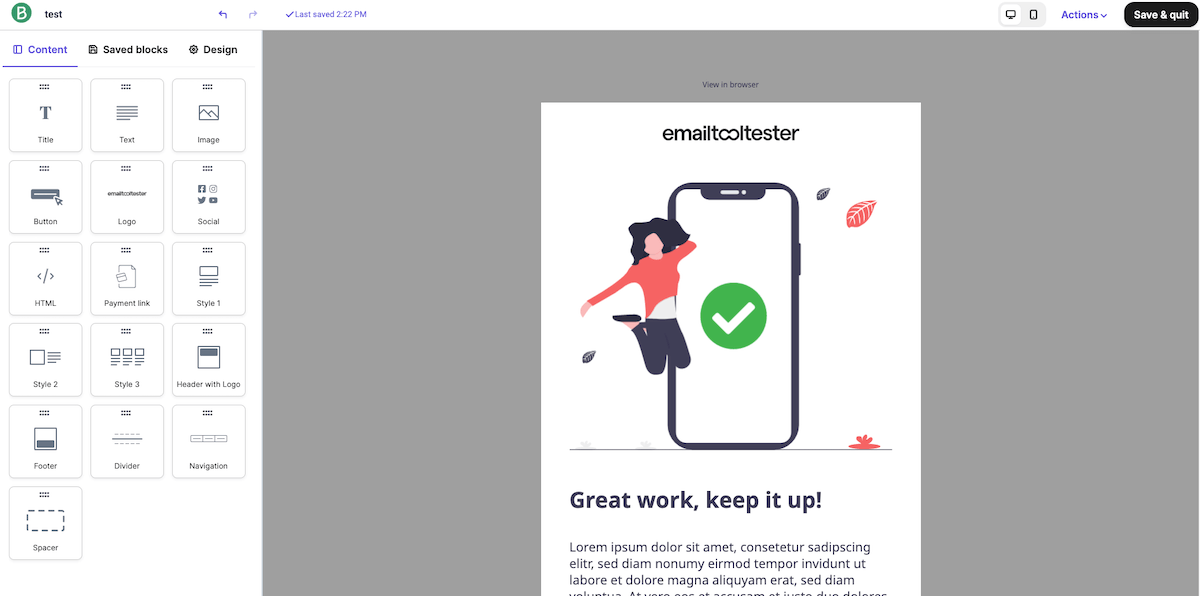
Brevo email editor
Winner: Both Brevo and Mailchimp have fairly shallow learning curves because of great design and a clear process. This round is a tie!
Design and Flexibility
The design of your emails is important, and many marketers prefer to use the ready-made templates that come with their email marketing provider. It’s therefore very important that there are plenty of attractive, mobile-responsive designs on offer and that these can be easily customized.
Mailchimp has more than 100 templates (or ‘themes’, as they call them), which are mobile-responsive and not bad looking at all. These are easy to tweak to your liking and can be saved so that you can re-use it across all campaigns. You can also create your own HTML templates via code, URL or .ZIP file.
You can filter the templates by category, making it easier to find what you’re looking for.
The only thing to note is that the free plan only gives you access to a handful of pretty outdated templates.
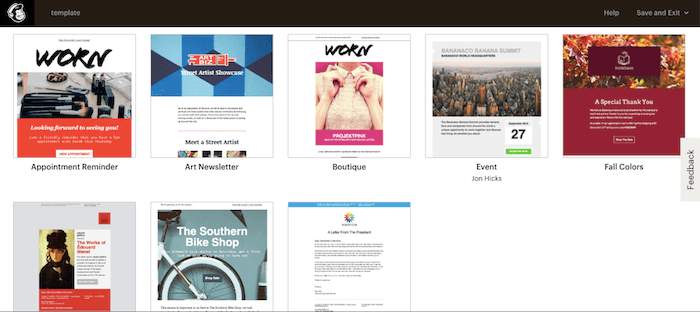
Mailchimp email templates
Unfortunately, there aren’t quite as many designs to choose from with Brevo, and they don’t look quite as modern as Mailchimp’s paid templates.
However, you can create your own template by copying and pasting the HTML into their editor or importing a template from another account on their platform by using a shared URL. It doesn’t allow you to import a template created on other email marketing or third-party platforms.
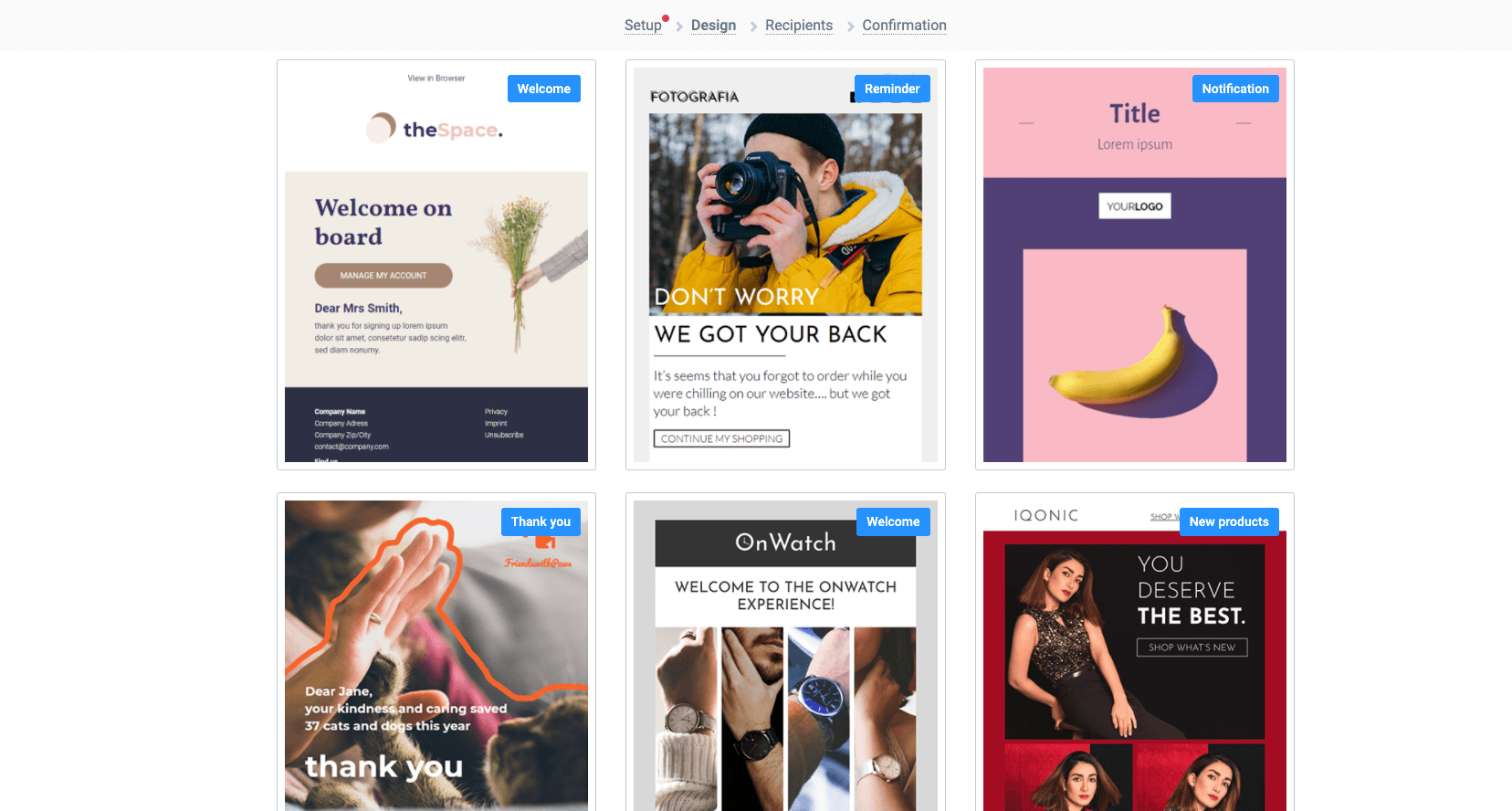
Brevo templates
Winner: It’s a tricky one. Though Mailchimp offers a greater number of more attractive email templates, you’ll have to pay for them. Brevo includes all templates for free… so we’re giving them both a point this round.
List Management
One thing Mailchimp users have a real issue with is email list management, and I totally see why.
Mailchimp’s lists are mutually exclusive. In other words, you can’t include contacts on different lists in the same campaigns. There is also no way to create automations to move subscribers from one list to the other, for example, as there is with GetResponse.
As Mailchimp charge per subscriber, it means that if you have the same contact on different lists, you’ll be paying for them multiple times. I’ve not seen this with any other providers and it’s very off-putting.
Furthermore, Mailchimp has made it all quite complex with their various options and naming conventions; you have audiences (contact lists), segments, tags and groups. No wonder users are so confused.

Mailchimp list management
The process of setting up lists and segmenting contacts is much simpler with Brevo. Use contact field criteria and behavior (email opens, clicks, etc.) to filter contacts and save the list to use in your campaigns. You can add multiple conditions.
You can also automate it so that when a new subscriber signs up, they are added to a particular list based on a particular condition.
But the best thing is that you have unlimited contacts on all plans, so you’ll never have the worries you do with Mailchimp about paying for the same subscriber more than once.
Winner: Brevo's list management features are on point, making it a great Mailchimp alternative. A point to Brevo! 3-2 to Brevo
Email Automations
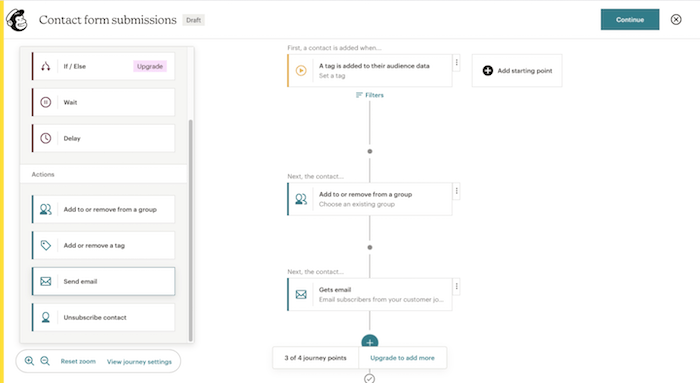
Mailchimp boasts that they have ‘All the automation triggers’. And whilst that is the case, is the price justified next to Brevo's array of automation options and affordable prices?
The key thing to note with Mailchimp’s marketing automation features is that you’ll need to flash the cash if you want to use them. Automations are no longer available on the Free plan, meaning you’ll need to sign up to a paid plan to set up just a basic automated welcome email.
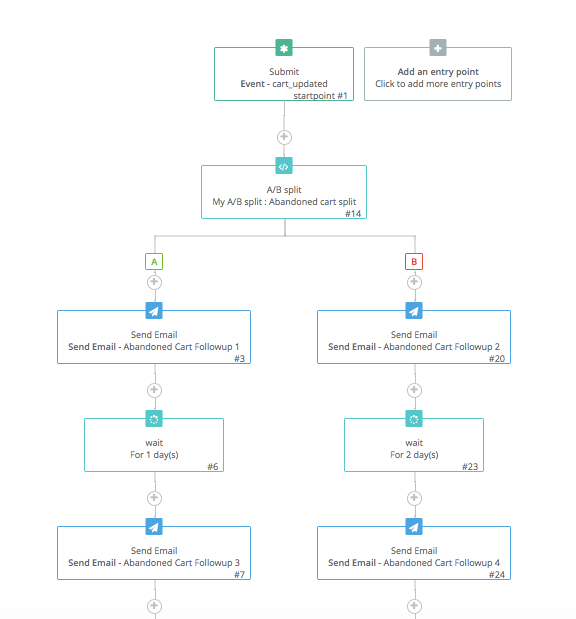
Brevo workflow automation
Brevo allows you to set up some pretty advanced triggered campaigns, based on contact data, email engagement, web behavior (using a tracking code on your website) and ecommerce activity. An additional benefit is that you can integrate all of Brevo's features into your workflows.
Here are a few examples of what we do on EmailTooltester:
- When a live chat (Brevo Conversations) ends, we send an opt-in request (“Can we stay in touch?”)
- After an online meeting (Brevo Meetings) ends we send an automated email with a discount for the next session.
To be honest, considering how affordable it is, I was surprised to see how extensive Brevo’s marketing automation workflows are. These include lead scoring and the ability to test your campaigns before activating. There’s also the ‘Best time’ feature, which allows you to send your campaigns out at the optimal time based on previous campaign performance.
Winner: Brevo bag another point for email automation! Another reason to check out this Mailchimp alternative. 4-2
Registration Forms
A standard feature, but definitely not something to skip over. Let’s see how easy it is to set up a form in both providers.
First of all, it’s not that easy to know where to go in order to create a registration form in Mailchimp as it doesn’t appear in the main navigation. It’s actually nestled under the ‘Audience' tab.
In terms of options, you can create an embedded form, pop-up form or landing page, however, it’s slightly fiddly to set up and not all forms appear to be mobile responsive.
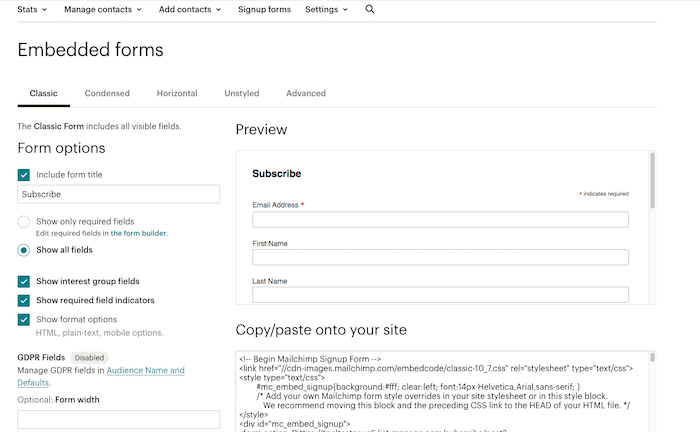
Mailchimp form builder
When new subscribers sign up, they’ll be put on the list (or audience) you choose, though they can only be on one if you want to avoid being charged again.
Brevo, on the other hand, allows subscribers to select which list(s) they want to be opted into (for example, based on interest or industry), which is pretty cool.
Brevo’s form builder is a pleasure to use, making the whole process a breeze.
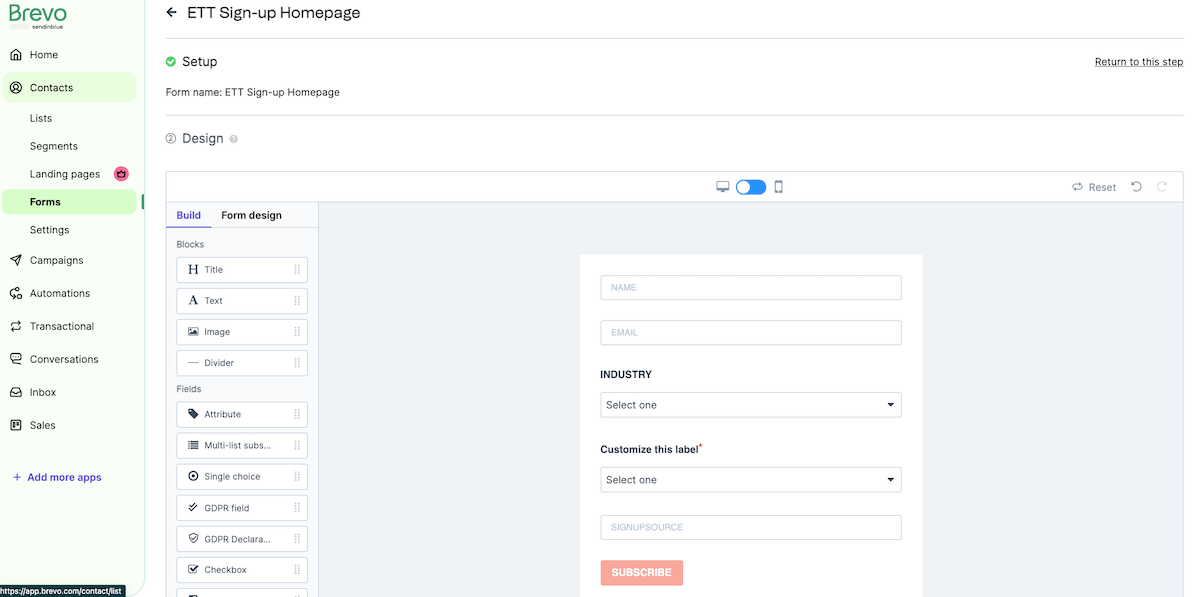
Brevo form builder
Winner: Brevo strikes again! So that’s 5-2 to Brevo.
Landing Pages
The main difference here is that Mailchimp’s landing page builder is included for free, whereas Brevo requires you to be on the Premium plan ($65/month). And even then, you’ll only be able to create 5 landing pages, unless you pay extra.
We compared Mailchimp’s builder to other free landing page builders and found it to be very easy to use, with lots of options for customization. It also allows for unlimited landing pages and the ability to add tracking for Facebook Pixel and Google Analytics.
Templates are nice-looking, but there aren’t many of them. Brevo has much more to choose from in the way of templates, and it’s very easy to edit them in their fast landing page editor.
Winner: Each has its pros and cons, but considering that Mailchimp offers this feature for free, we’re giving them the point this round. 5-3
CRM
Though Mailchimp claim that you can use the software as a CRM, it doesn’t really have enough features to warrant the claim. We’d like to see additional options like the ability to upload a file, create a task or assign contacts to specific sales agents.
One thing Mailchimp does offer is a feature called Social Profiles. This allows you to create targeted campaigns based on social media (depending on what your contacts have made publicly available). Bear in mind that activating this feature will incur additional charges.
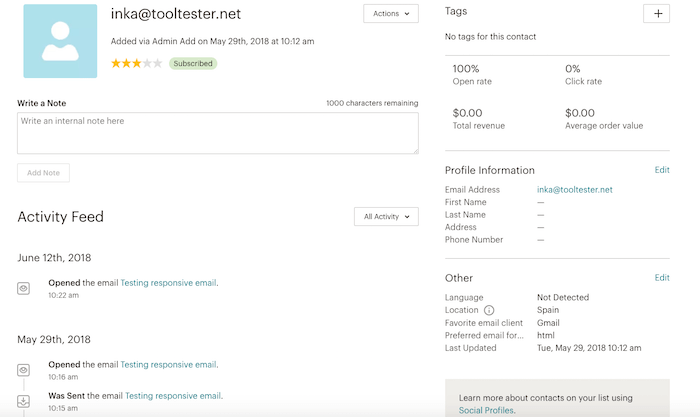
Mailchimp CRM customer profile
One thing Mailchimp does well is ecommerce data; if your account is connected to your online store, you can see how much revenue each contact has generated.
Brevo’s free CRM makes it easy to manage contacts by assigning them to different users and allowing you to set tasks and deadlines within each customer profile. You can also see additional information like which web pages they’ve visited.
Unfortunately, importing contacts into this section isn’t the simplest, as you’ll need to upload a file containing the data. It would be much easier if you could copy them over from your existing lists of subscribers.
There’s also no tag to assign a lifecycle stage to a particular contact like you’d see in advanced CRMs such as HubSpot.
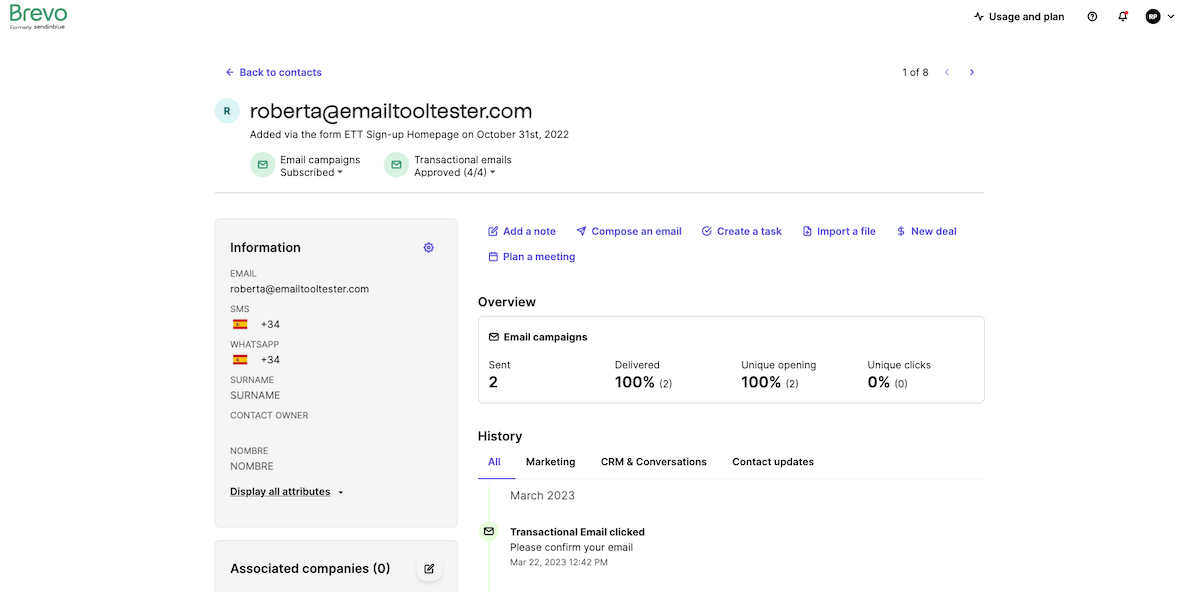
Brevo CRM customer profile
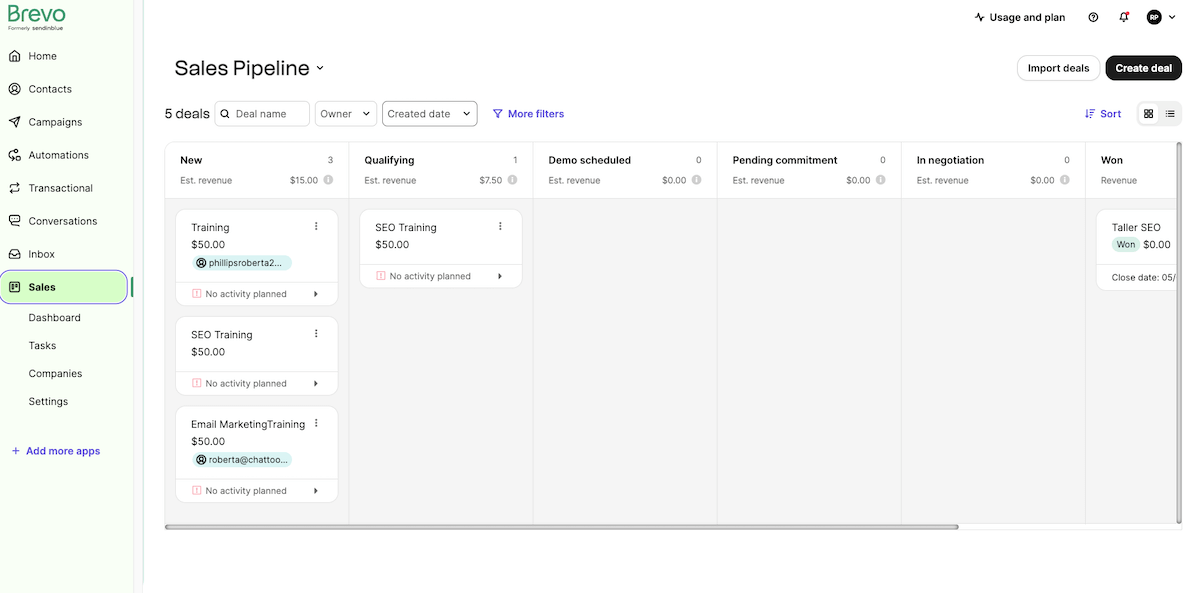
Brevo Deal Pipeline
Winner: Each provider has good and bad points in this area, which is why we’re giving them a point each. However, if you’re looking for an email service with good CRM capabilities, we’d recommend checking out ActiveCampaign. 6-4
Spam and Design Testing
Mailchimp and Brevo have similarly decent design testing features. Aside from testing in mobile and desktop, they both allow you to test how your email will look on various email clients (Outlook, Gmail, etc.).
The difference is that though Mailchimp offers more email clients to test on than Brevo, it’s not exactly free.
Mailchimp monthly paid plans come with 25 Inbox Preview tokens to use every month. Bear in mind that each individual client you test will use one token, and unused tokens are not carried over to the following month. You can, of course, purchase more tokens if you run out.
Brevo, on the other hand, doesn’t charge for this feature.

Brevo design testing
No spam testing is available on either provider.
Winner: This is a tricky one as both providers offer a nice built-in previewer. What tips it in Brevo’s favor is the fact that they don’t charge a cent for email client testing. 7-4
Reporting
Both Mailchimp and Brevo offer the following reporting features:
- Email performance (opens, clicks, bounces, unsubscribes, etc.)
- Links clicked
- Geolocation
- Automation reports
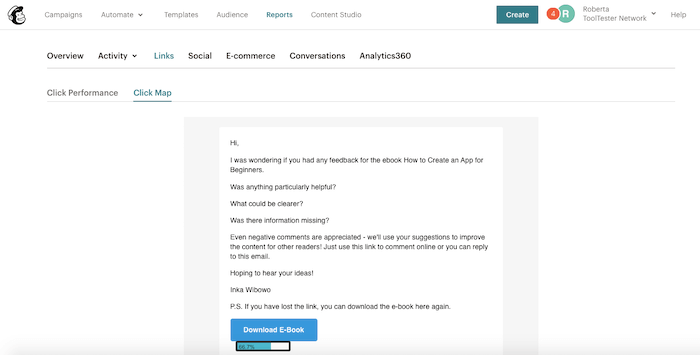
Mailchimp reporting features
However, Brevo is missing social and ecommerce reports.
You can track conversions through both providers and Google Analytics integration is also available.
Winner: Due to the fact that Mailchimp offers social and ecommerce data, they win this round! Brevo 7, Mailchimp 5.
Deliverability
After prepping your email content and design and making sure it looks good on all email clients, you want to be sure that it’ll arrive in your subscribers’ mailboxes. Let’s take a look at how these providers did in this area.
We’ve been tracking the deliverability of the providers we review for a number of years.
Here are the average figures of how they performed in our last 3 rounds of bi-annual deliverability tests:
| MAILCHIMP | BREVO | |
|---|---|---|
| Overall Deliverability Rate | 92.6% | 74.7% |
Our tests show that Mailchimp's deliverability tends to be higher (and more stable) than Brevo's deliverability, which tends to fluctuate more.
Winner: Mailchimp beat Brevo this round. Brevo 7, Mailchimp 6.
Transactional Emails
Both Brevo and Mailchimp offer transactional emails, for example, an order or shipping confirmation email.
Brevo includes this service in its main offering, whereas Mailchimp requires you to pay extra. Mailchimp charges $20 for 25,000 emails on top of what you’re paying for the monthly plan.
Note that there’s a cap of 300 emails/day on Brevo’s free plan, which isn’t ideal for time-sensitive communications, so I’d recommend using the paid account $35.
Winner: Considering this incurs an extra cost with Mailchimp, we think Brevo is the better option. They also have better deliverability rates, as you’ve seen above. 8-6 to Brevo
SMS Marketing
Sending SMS notifications with Mailchimp is quite limited. You’ll only be able to do so if you sell products on a store you’ve created with Mailchimp. If you’d like to send confirmation text messages about a service, you’ll first need to create appointments on Mailchimp that your contacts can schedule with you. What’s more, SMS text messages are only available to users in the United States.
Brevo allows you to send SMS campaigns on all plans, though you’ll need to purchase credits. The price depends on the country you’re sending to. For example, sending SMS within the US will cost you €5 for 500 SMS, €10 for 1000, etc. Note that you’ll be charged in Euros regardless of where you operate.
Luckily, Brevo doesn’t set any kind of limitations like Mailchimp.
Winner: Brevo is a much more flexible and versatile SMS marketing provider than Mailchimp. Another point to them! 9-6
Integrations and Extras
Mailchimp, being as well known as it is, integrates with hundreds of marketing tools. You should be able to connect just about every tool you need.
Brevo doesn’t have nearly as many direct integrations available, though, like Mailchimp, they are part of Zapier’s library.
Winner: With over 300 integrations, Mailchimp has to take this one. Brevo 9, Mailchimp 7.
Support
Both email marketing tools have similar support channels available – knowledge base, email, live chat – though, in Mailchimp’s case, you have to upgrade to a paid account in order to receive any support.
The customer support Brevo offers can vary; their Help button sometimes shows you different support options (sometimes just their knowledge base). This can be quite frustrating if you need help in the moment and it isn’t available.
In terms of responsiveness, Mailchimp’s live chat was slightly slower than we would expect. When we’ve had to contact Brevo support, they’ve been very responsive and helpful.
Winner: Due to the fact that it’s almost impossible to get in touch with Mailchimp if you’re on their free plan, we’re giving Brevo the point here. 10-7
Prices
So, we arrive at the final round: pricing.
You’ve probably picked up on the fact that we are not big fans of Mailchimp’s pricing.
Although they offer a freemium and pay-as-you-go plan, the fact that they now charge users for unsubscribed contacts and those who haven’t confirmed opt-in can make this email provider quite expensive, and therefore unattractive for many marketers and small business owners.
Compared to other email marketing tools, they’re not the most expensive, but when compared to Brevo, Mailchimp comes out pretty steep.
Brevo, which doesn’t set a cap on contacts, charges per the number of emails sent. This makes it one of the most affordable all-in-one email marketing software on the market, and also a great option for those who have a high number of contacts but send just one or two emails a month. For this reason, amongst others, we made it one of the top ActiveCampaign alternatives.
Let’s take a look at their lowest-level plans to compare:
| SENDINBLUE (LITE) | MAILCHIMP (ESSENTIALS) | |
|---|---|---|
| FREE PLAN
9,000 emails /month (300 emails/day) & unlimited contacts |
FREE PLAN
1000 emails/month (500 emails/day) & 500 contacts |
|
| $25 20,000 emails & unlimited contacts |
$75 500,000 emails & 5,000 contacts |
|
| $35
40,000 emails & unlimited contacts |
$110 500,000 emails & 10,000 contacts |
|
| $49 60,000 emails & unlimited contacts |
$385 500,000 emails & 50,000 contacts |
|
| $115 100,000 emails & unlimited contacts |
$800 1,200,000 emails & 100,000 contacts (Standard plan) |
You’ll see there is quite a difference between Brevo and Mailchimp in price.
Mailchimp's freemium plan allowance has dropped sharply recently, making it a lot less attractive.
It’s worth noting that Brevo’s plans all come with many key features, like marketing automation, advanced segmentation and CRM software included.
In order to unlock Mailchimp’s multistep automation workflows, you’ll need to sign up to their Standard plan ($90 for 5,000 users). If you’re in need of advanced segmentation, comparative reports, multivariate testing and premium support, you’ll need to take out their Pro plan.
Winner: Considering all the features Brevo includes (CRM, marketing automation, SMS, advanced segmentation) for such a reasonable price, the point definitely goes to them this round!
Which means we have a winner… Brevo! The final score is 11-7.
Detailed Features Comparison (table)
| Ease of Use | ||
|
Editor |
||
|
Personalization |
|
|
|
Email types |
||
|
Choice and Flexibility of Template Designs |
||
|
Email Marketing Automation |
||
|
List Management |
||
|
Registration Forms/ Opt-in & Opt-out- Process |
||
|
Deliverability |
||
| Reports and Analysis | ||
|
Languages |
||
|
Spam- and Design-Testing |
||
|
Bounce Management |
|
|
|
Blocklist |
|
|
| Storage available for data and images | Unlimited | unlimited |
|
Authentication |
|
|
|
Own Domain |
|
|
|
Different levels of account access |
|
|
| Integrations |
|
|
|
Landing Page Builder |
|
|
| Customer Support | ||
|
|
Free Plan: $0/mo 20,000 emails: $25/mo 40,000 emails: $35/mo 60,000 emails: $49/mo 100,000: $69/mo 40,000 emails : $75/mo 100,000: $115/mo |
Up to 500: $0/mo Up to 2,500: $45/mo Up to 10,000: $110/mo Up to 20,000: $230/mo Up to 30,000: $300/mo Up to 40,000: $340/mo Up to 50,000: $385/mo |
|
Overall rating |
||
When to choose Brevo vs Mailchimp
With double the points of Mailchimp, Brevo is clearly doing a lot right! Let’s recap when you might choose one over the other.
When to choose Brevo:
- You have lots of contacts but send few, targeted emails
- You need a transactional email service
- you're looking for a free plan with high sending limits and no cap on contacts
- You want to send SMS as part of your marketing strategy
- You want to make the most of pro features (e.g. marketing automation) without the price tag
- You need a reliable email service that will deliver your messages securely
When to choose Mailchimp:
- You need detailed ecommerce and social reports
- You need a free landing page builder
- You want to be able to easily integrate with all your favorite marketing tools
Brevo vs Mailchimp: Final Thoughts
Mailchimp is a LOT more well-known than Brevo, as we can see in these Google search results::
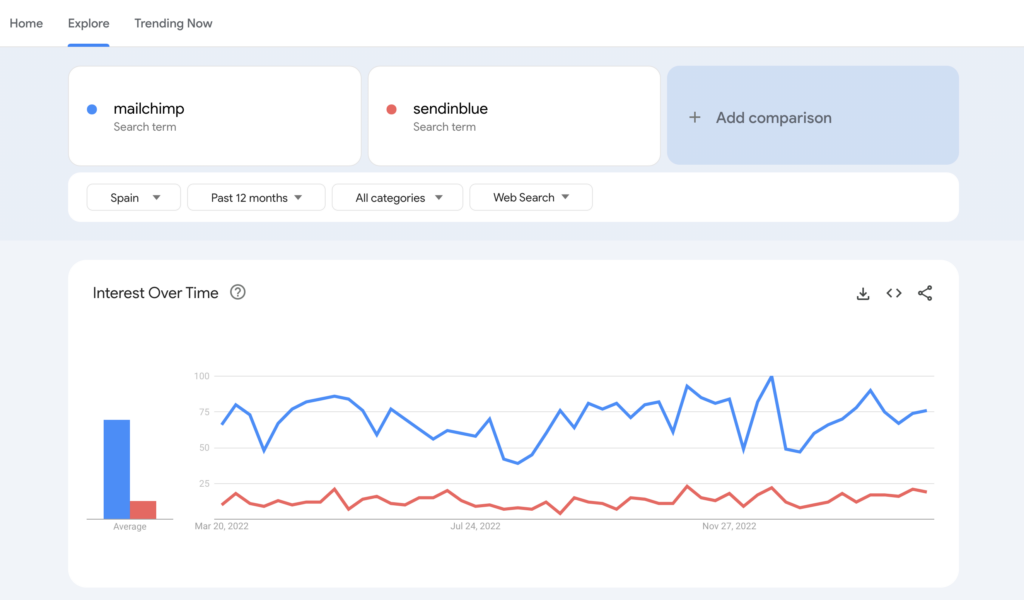
But as we’ve seen in this Brevo vs Mailchimp comparison, notoriety isn’t everything.
Brevo is a top choice if you’re looking for a user-friendly email marketing tool that doesn’t skimp on features. You’ll find their prices much more reasonable than Mailchimp’s and their list management to be much less of a headache.
Brevo's improvement in deliverability rates is a sure sign of a top email marketing software and a strong Mailchimp competitor.
I think this comparison shows that when you actually break everything down, Mailchimp still has some areas to work on if it wants to be the real champ.
Aside from Brevo, there are plenty of other email marketing solutions out there that give Mailchimp a serious run for their money. Check our video below on MailChimp alternatives, (Brevo being one of them!):
You can also see how other popular email marketing platforms compare to Mailchimp in the following comparisons:
Leave a comment if you have any questions – I’d be more than happy to help!
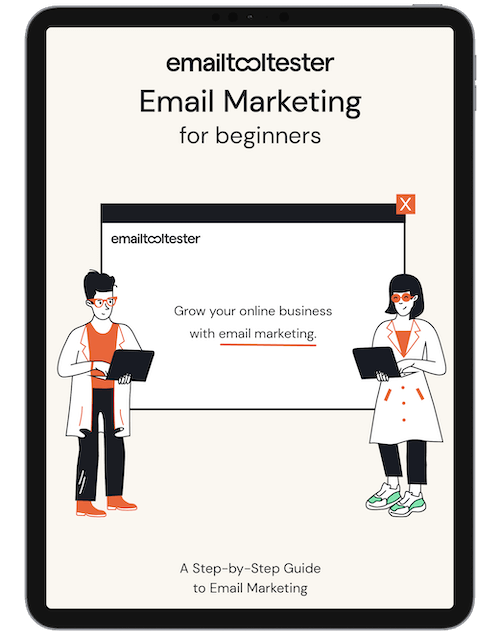
Email Marketing: Beginners Guide
Ideal for small & medium-sized businesses, online stores and bloggers. Avoid common mistakes with this complete guide.
Sign up to receive your free copy!
We keep our content up to date
21 Feb 2024 - Small addition in Automations
04 Dec 2023 - Automations no longer available in Mailchimp's free plan
13 Jul 2023: Updated deliverability averages
15 March 2023 - General update, video added
15 Sept 2022 - Changes to Mailchimp freemium plan
25 Jul 2022 - General update, new sections added
27 Apr 2022: Updated deliverability averages
17 Feb 2022 - Updated Brevo's prices
06 Sept 2021: Updated Brevo images
01 June 2021: Updated the automation section
06 Apr 2021: Updated Mailchimp's prices and pricing table
16 Mar 2021: Updated deliverability section based on the latest round of testing
04 Nov 2020 - Brevo's pricing changed
31 Aug 2020 - Updated the deliverability averages
10 Feb 2020 - Updated deliverability averages to include latest round. Updated overall score based on this.
Our Methodology
This article has been written and researched following our EmailTooltester methodology.
Our Methodology
